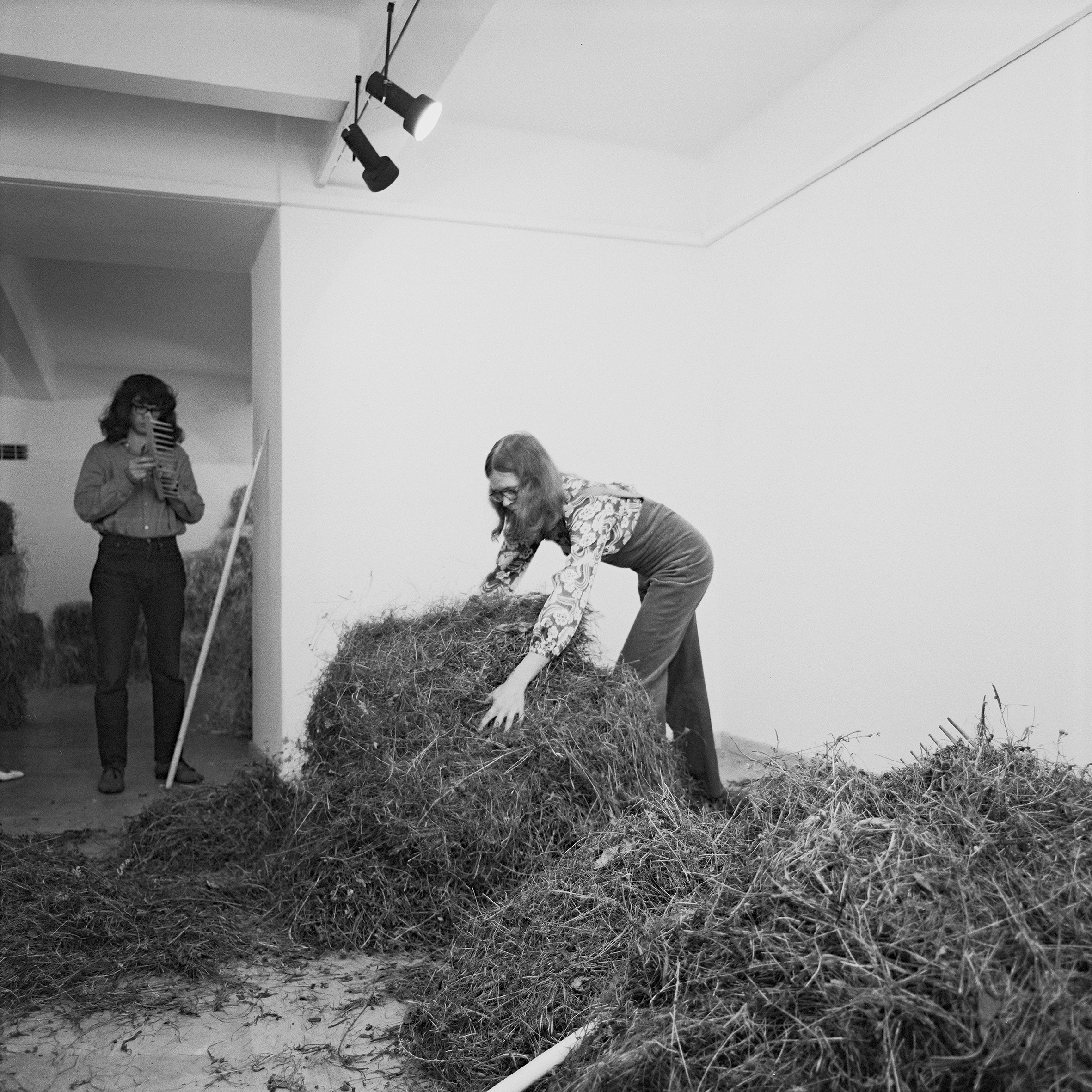
Zorka Ságlová
Zorka Ságlová (1942 – 2003) studied in the studio of textile creation at the Academy of Fine Arts and Design in Prague, what strongly influenced her work. In the 1960s she exhibited at the now legendary Constructive Tendencies and New Sensitivity exhibitions. After the “Hay – Straw” exhibition in August 1969 she was persecuted by the communist media and during the normalization of the 1970s she was forbidden to sell or to present her art in public. In that period, she moved to open-air spaces where she organized land-art actions exclusively in the presence of her close friends. In the late seventies Zorka Ságlová went back to textile production in the form of the gobelin tapestries with a rabbit as the main character which represented a cultural symbol known in different countries. In eighties she experimented with painting and textiles as well as with action drawings with a real rabbit. From 1991 she worked with quotations from art history, using multiple transfers of visual information, and later with simpler means of expression associated with new technologies.
Zorka Ságlová, Untitled, 1999, varnish on damascus, 90 x 125 cm. Courtesy of the artist and Gandy Gallery.







